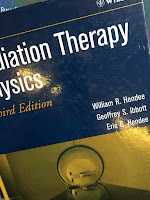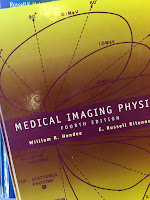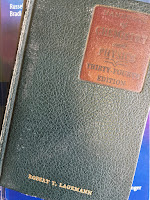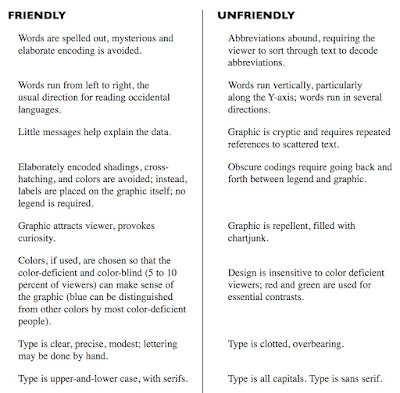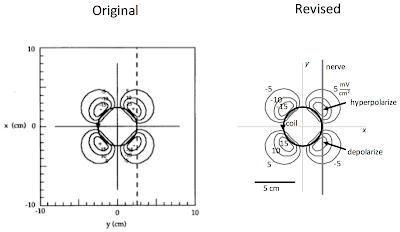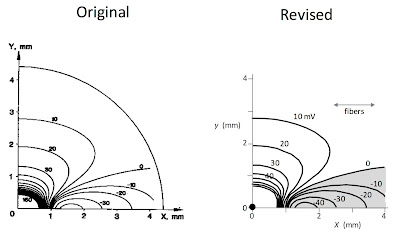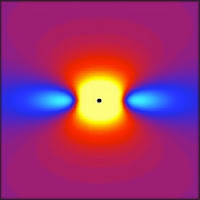Problem 47. The “Calorie” we see listed on food labels is actually 1000 [calories] or 1 kcal. How many kcal do you expend each day if your average metabolism is 100 [watts]?This problem is as close as Russ Hobbie and I get to diet advice in IPMB. But weight-loss blogs get a lot more page views than do blogs about physics applied to medicine and biology, so I better post about dieting to beef up my numbers.
Fortunately, Physics—the free online magazine from the American Physical Society—recently published an article titled Defending Thermodynamics in a Diet Debate, by Katherine Wright.
Experiments show that calories from different food types are equivalent and that the laws of thermodynamics apply to human metabolism, despite claims to the contrary.The article begins
Not all calories are equivalent, say some nutrition experts, because the human body extracts energy differently from different types of food. A related concern in the field is that diet advice based on the first law of thermodynamics is inappropriate. However, these claims are countered by those studying human metabolism, who point to experiments that show that the calorie counts on food packaging correctly account for the differences between foods. Both camps agree that thermodynamics has earned a bad reputation in diet science, thanks to certain myths about weight loss, but they disagree on whether that reputation is deserved.Wright continues
“A calorie is of course a calorie,” says Kevin Hall, who trained as a physicist and currently conducts experiments and develops mathematical models for metabolism and body weight regulation at the National Institutes of Health in Maryland. Hall agrees that different macronutrients—think fats versus carbohydrates—have very different effects on the body, but he strongly disagrees with Preece’s claim [that “a calorie may not be a calorie”]. If the question is just about the number of calories burned by the body, rather than stored as fat, it’s “practically the same” for two foods having the same calorie rating, regardless of their fat or carb content, he says.Seriously, the laws of thermodynamics are in no danger. Einstein believed that classical thermodyanamics “is the only physical theory ... [that] will never be overthrown.” The question is if the laws are being applied appropriately.
At first glance, the laws of thermodynamics may seem inappropriate for modeling energy fluxes through the human body, as the body is not a closed, isolated system. “Living organisms are not in equilibrium,” so thermodynamics is not relevant, says Richard Feinman, a biochemist at the State University of New York Health and Science Center at Brooklyn, who also agrees with the “calorie is not a calorie” point-of-view. He argues that even if the oxidation pathways for different macronutrients use the same total energy, they still generate different amounts of work and heat and thus their calories are inequivalent. This line of argument is erroneous, says Dale Schoeller, who studies metabolism and nutrition at the University of Wisconsin in Madison. He notes that the human feeding experiments conducted to determine the calorie content of foods factor in variations in how the body handles different macronutrients. These numbers are the ones used to calculate the values that appear on the sides of cereal boxes, for example. “It’s not a perfect number; it varies a few percent between individuals due to differences in their metabolisms,” Schoeller says. But it’s close to being spot on.The article concludes
Hall says that he and others have made headway in educating physicians and dieticians about the equivalence of calories from different macronutrients and also about the 3500 calorie rule. For example, they have developed tools that allow physicians to make more accurate predictions. Hall’s software, the NIH Body Weight Planner, encodes a simplified version of his energy flux model and can be used by patients to predict the calorie reduction necessary to reach a target weight. “The website has been used by millions of people, so the message is getting out there,” he says. But, he adds, diffusing dieting myths in the wider public is a whole different ball game.I love a good argument. Although I'm not an expert in this field, I'm gonna go out on a limb and side with the physicist: A calorie is a calorie is a calorie.








